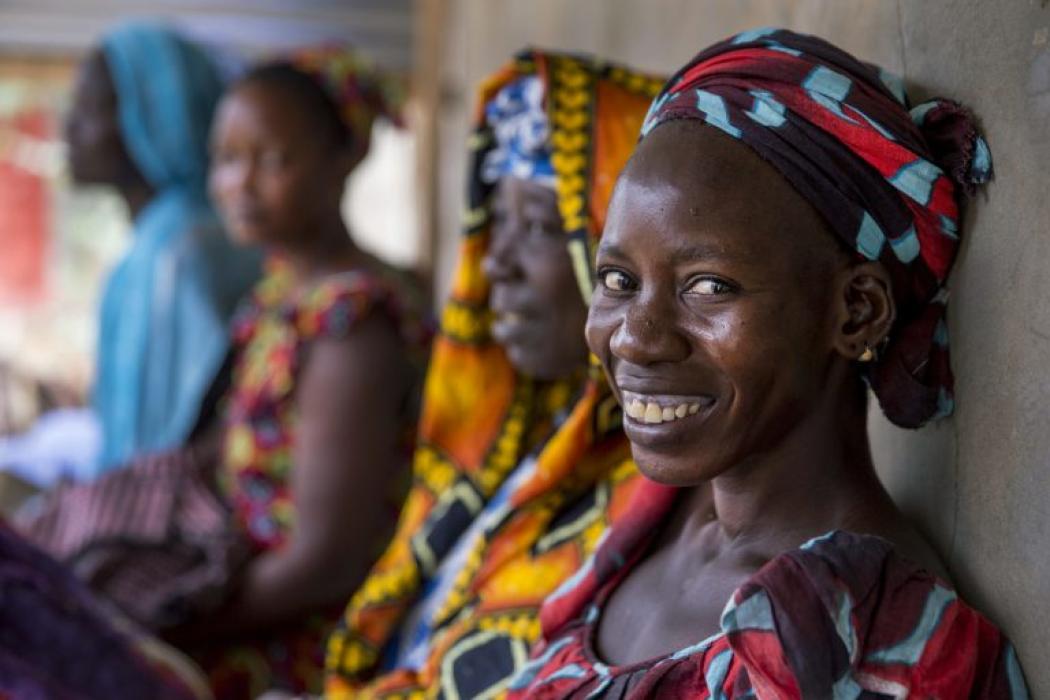Empowering Women in the Health Workforce for Economic and Social Growth

A mobile clinical outreach team from Marie Stopes International on a site visit to Laniar Health Center, a rural area where they offer many sexual reproductive health services and counseling. August 14, 2014 in Laniar, Senegal. (Photo by Jonathan Torgovnik/Reportage by Getty Images).
By Samantha Rick, Frontline Health Workers Coalition and IntraHealth International
My mother became a nurse because it provided job security since we are always in need of more nurses — a critical part of the global health workforce, which is predominately female. As we at the Frontline Health Workers Coalition outline in a new fact sheet released today, on International Women’s Day, job security of health employment holds enormous potential for progress across every global health issue and closing the gaps in access to essential health services for more than 400 million people. It also holds tremendous potential for spurring inclusive economic growth for women, especially in low- and middle-income countries.
However, as we note in our fact sheet, job security alone is not enough to entice the large swaths of health workers that the world needs, and job security and reliability of a regular paycheck is unfortunately not the reality for far too many frontline health workers in low- and middle-income countries.
Health work needs to be seen as a good bet — for women and men alike — if we are going to close the gaps in access to health workers. While working to eliminate pervasive structural inequities that prevent investments in health employment from reaching their maximum potential, policymakers must also take care to propose changes that raise the social prestige of health work. Where, when, and how much governments invest in health sends clear social messages about what kinds of work should and should not be valued.
According to the International Labour Organization, women make up 70% of the health workforce worldwide, yet men comprise most of the leadership and specialized positions in the health workforce. Clearly, equalizing pay, leveling, training, and education within the health workforce has potential to up-end pay gaps and provide meaningful employment for millions of women around the world. To remedy this problem, FHWC recommends governments to commit to a multi-stakeholder financing plan for health workforce, conduct a systematic review of sex distribution among pay grades and career advancement practices, and formally recognize all cadres of health workers.
There are, however, two sides to women’s empowerment when it comes to work. Health work is socially devalued by virtue of its association with women and femininity. Across the board, industries that are comprised of mostly women are underpaid and socially undervalued (this includes education, care work, social work, and child care). This devaluation happens in spite of the real economic value of women’s work – for example, it is estimated that women contribute $3 trillion to the health system globally, though roughly half of this work goes unpaid – and is directly tied to the social prestige accorded to the profession.
Paula England has done substantial research on the ways that women’s work is undervalued simply because it is done by women. While some claim that women simply tend to choose professions that pay less, England’s research shows that predominantly male industries lose wages when women enter the field. Her most comprehensive study, covering 1950-2000 in the United States, showed that when jobs changed gender composition from majority male to majority female, wages fell (for example, wages for recreation jobs declined by a whopping 57%). Wages also rose in the reverse cases — computer programming, for example, started out as a woman’s job, but as men began to take over the field, the entire industry started to pay more and gained substantial prestige.
What sort of message does it send to a community if their only access to health services is a volunteer with inadequate training, support, or career ladder? How should nursing students feel when they hear policymakers call for them to personally pay for further training, higher educational accreditation, and tuition fees if there is not a corresponding career path that would justify that personal investment? Why, when there is a global estimated deficit of 18 million health workers, are women routinely encouraged to go into more ‘male’ professions like engineering and technology and men are often not encouraged to take positions as community health workers or nurses?
Raising the cultural prestige of the frontline health worker profession is simply a must if we are to achieve the SDGs and all global health compacts. This needs to happen by ensuring that frontline health workers have the full capacity and support to advance to management and senior roles regardless of gender. Health work is devalued because of its association with women, and the entire society suffers as a result. If investment in health employment was truly proportionate to its impact, and wasn’t bound by the gender of its workers, it would be transformative.
